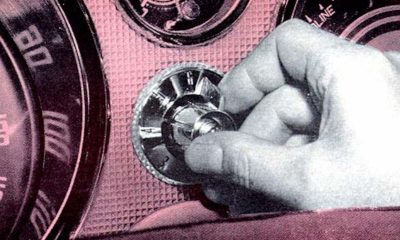HAVE you ever wondered what your car thinks? The modern vehicle has numerous sensors, relays, actuators, electronic-control units and kilometres worth of wiring connecting all in a giant network (see sidebar on CAN bus). Add to that high-speed processors that measure, calculate and analyse data, and the rate of data transfer is mind-boggling. There is a way to filter this data stream and focus only on the relevant data – it is called telemetry.
Background
The word telemetry is derived from Greek roots tele, meaning far off, and metron, meaning measure. Although it is normally assumed that the transmitting happens wirelessly, it is not always the case. Even the data displayed on a vehicle’s instrument cluster – such as vehicle speed and engine revolutions – is a form of tele-metry, as it displays “measurables”. Some dash displays show the driver a wide variety of measurements, but they’re only drops in the ocean compared to the complete dataset used by vehicle systems to operate the car. An excellent example of telemetry is evident in a Formula One race car, where engineers in the pit lane scrutinise the large screens that display all the critical data of the car during the race. The technology is now available in some local road cars such as the Opel Astra OPC that we tested for this feature with the help of the OPC Power App.
Data generation
Think of the the modern vehicle’s electrical architecture as a computer network. The data is generated on the network by the following elements.
Switches
A switch is essentially a simple sensor that provides a Boolean (true/false) status of a relevant system. Examples include door-closure status, air-con on/off, brake-pedal-pressed status and lights on/off.
Sensors
The main purpose of sensors is to provide real-time sensory information to the relevant control systems. A variety of sensors is used in the automotive application and most provide a voltage feedback that is converted to the relative measure by means of a transfer function. The type of info includes temperature and pressure readings, positional information (examples include crank angle and accelerator pedal), chemical analysis (O2 sensors) and electrical resistance (mass-airflow sensors).
Relays and actuators
Relays and actuators are the functional operators of a system. Examples are the starter relay that allows an engine to crank and the electric actuator that changes the vane angle on a variable-nozzle turbocharger. Most of the latter also have a status/position feedback loop. The good old throttle cable on petrol engines that runs from the accelerator pedal to the throttle valve has long been replaced by an electrical actuator that receives a percentage signal from the accelerator pedal via the ECU.
Control units
The individual control units are the computers, each with a processor, memory and a control algorithm (called the “strategy” in the system-calibration field). Example units include the ECU, ABS and infotainment system.
Wiring harness
Connecting all the nodes described above, and forming the network, is the wiring harness. In a modern vehicle, the total length of all the wires can easily exceed a couple of kilometres. This would’ve been even greater if every node was connected to other nodes by separate wires. The industry standard to simplify communication is termed the CAN bus (see page 134) that allows multiple messages to be transmitted on a twisted pair of wires.
Telemetry in action
OPC Power App
Opel recently launched the OPC Power App telemetry system. The hardware consists of a telemetry module that taps into the CAN bus of the vehicle and allows access to around 60 channels. It’s done through an Apple iPhone or iPad with the Power App. The hardware module creates a Wi-Fi hotspot within the cabin that allows the Apple device to receive live data wirelessly anywhere in the cabin.
We put this app to the test at Killarney Racetrack, where the performance boundaries of the vehicle and application could be tested. Be warned, it does take some time to understand the software and set up the user-interface to view the channels in which you’re interested.
Driving and looking at the display is not a good idea – even on a deserted racetrack. A much better option is to record the data for post-session analysis. We did this for a flying lap of Killarney and exported the data as a .csv file (that can be used in Microsoft Excel). It still needed processing to filter out the relevant infor-mation and draw up the graphs. Have a look to the right – it’s a selection of data channels plotted against distance around Killarney for a single lap completed in a time of one minute and 30 seconds.
The Power App is definitely a step in the right direction for the enthusiast but needs more development to make it user-friendlier. The advantage of using a smartphone device is that GPS data is linked to the vehicle telemetry set so that it can be plotted around the track. The price for the OPC Power App hardware module and wiring harness is R6 052 (excluding installation) and it’s available through the Opel dealer network.
Future telemetry
With the arrival of the electric vehicle (EV), you can argue that the future of telemetry is the present. Thanks to dedicated applications on smartphones, a battery’s state of charge and various other parameters can be viewed. There’s little doubt the car of the future will communicate even more extensively about the state of health of all its systems … and even complain when it detects abuse.











